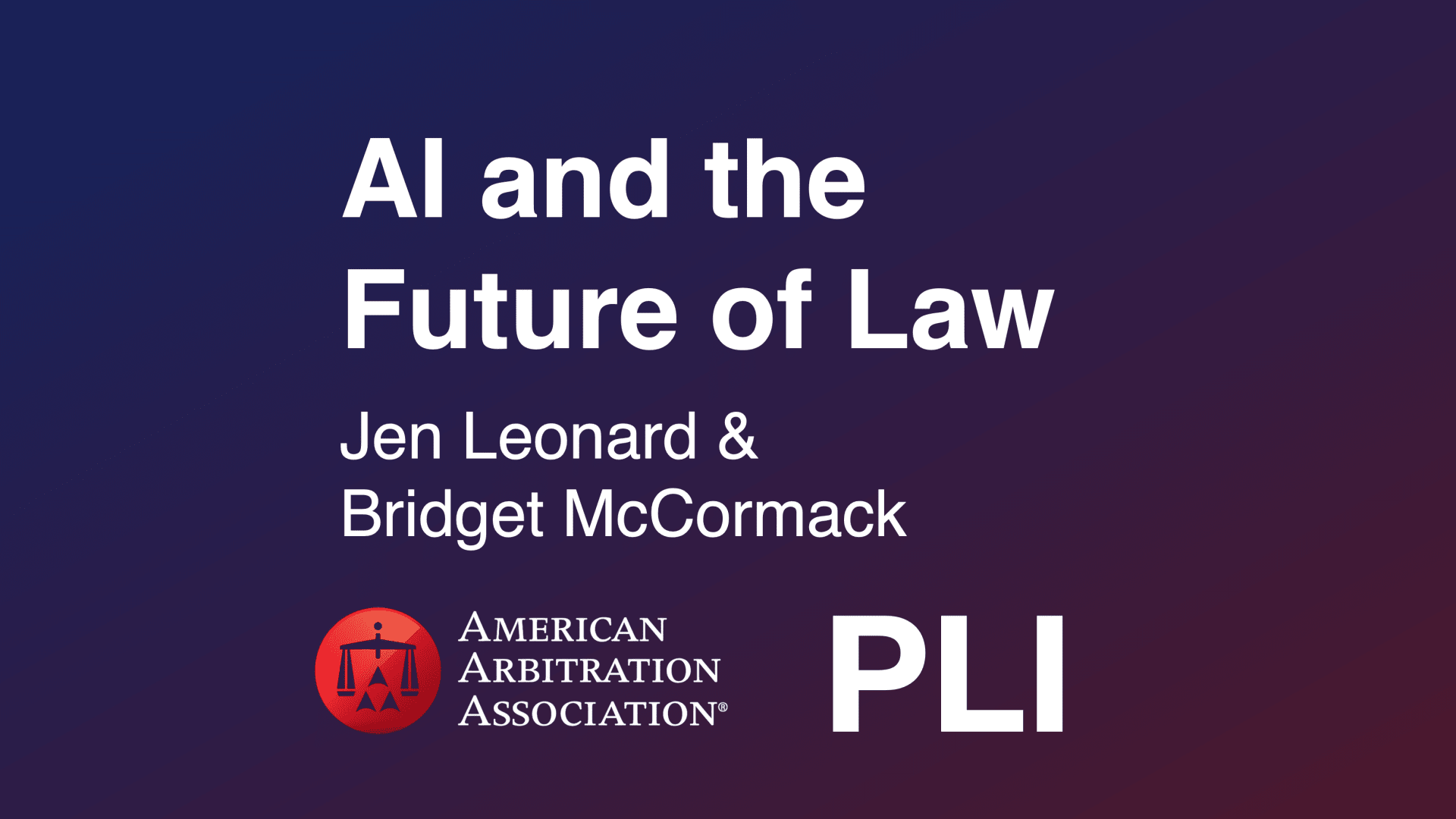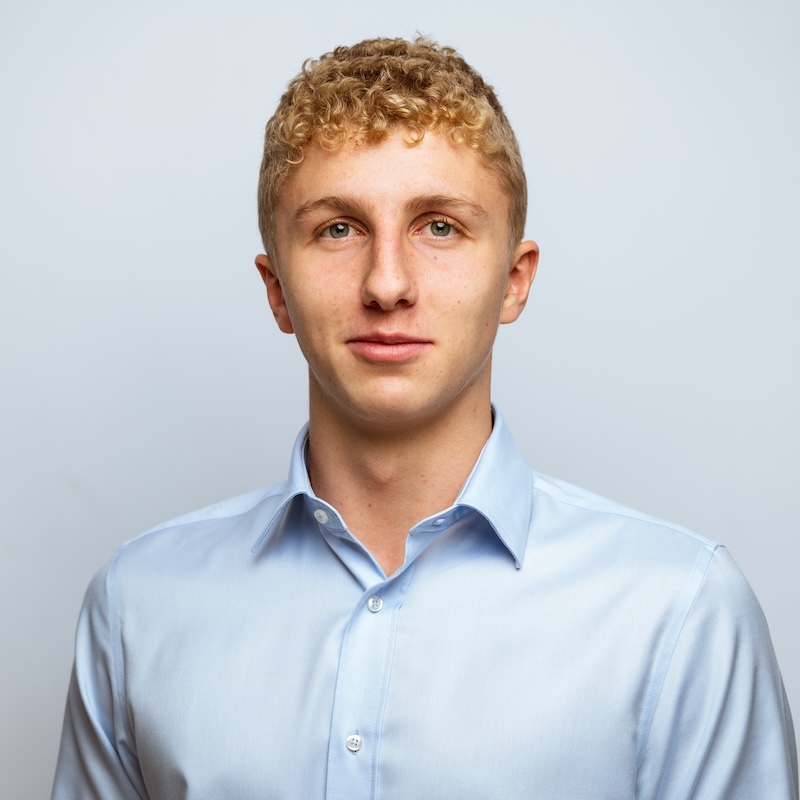Garfield AI Founders Discuss Building the World's First AI-Native Law Firm on AI and the Future of Law Podcast
Philip Young and Daniel Long joined hosts Jen Leonard and Bridget McCormack on the 'AI and the Future of Law' podcast to discuss Garfield's hybrid AI system, regulatory approval journey, solving AI hallucination challenges, and their vision for transforming legal services through responsible technological integration.

London, 19 August 2025 – Philip Young and Daniel Long, co-founders of Garfield AI, appeared together on the "AI and the Future of Law" podcast, hosted by Jen Leonard and Bridget McCormack, to discuss the technical innovation, regulatory journey, and transformative vision behind the world's first fully AI-native, regulator-approved law firm.
A Unique Combination of Expertise
The podcast brought together Philip Young, an experienced City commercial litigator, and Daniel Long, a quantum physicist turned AI entrepreneur, to explain how their complementary expertise shaped Garfield's groundbreaking approach to AI-powered legal services.
This combination of deep legal practice knowledge and cutting-edge technical capability has proven essential to building a platform that meets both regulatory requirements and technological challenges.
The Hybrid AI System: Expert Systems Meet Large Language Models
Daniel Long revealed the technical architecture that distinguishes Garfield from other AI legal products: a hybrid system combining deterministic expert systems with probabilistic Large Language Models (LLMs).
Expert System Foundation
The expert system component encodes Philip's 25 years of litigation experience and knowledge of the Civil Procedure Rules. This deterministic layer ensures processes follow established legal protocols with precision and consistency.
LLM Integration
Large Language Models handle natural language understanding and generation, allowing the system to interpret documents, communicate with users, and draft legal correspondence in natural language.
The Hybrid Advantage
By combining these approaches, Garfield achieves the reliability of rule-based systems with the flexibility and natural language capabilities of modern AI. The expert system constrains and guides the LLM, preventing the kinds of errors that can occur when AI operates without guardrails.
Solving the AI Hallucination Challenge
A significant portion of the discussion focused on Garfield's approach to preventing AI hallucinations, being one of the most serious concerns about deploying AI in legal practice.
The solution involves multiple layers of protection:
1. Architectural Constraints
The expert system architecture constrains what the LLM can generate, preventing it from straying into high-risk areas or making unsupported assertions.
2. Self-Testing Mechanisms
The system includes automated testing that continuously validates outputs against expected standards and legal requirements.
3. User Approval Workflow
Critically, Garfield requires user approval for each action. The system drafts documents and proposes actions, but users review and authorize before anything is sent or filed.
4. Case Law Restrictions
As Philip explained, Garfield is forbidden from proposing case law, which represents "a very high-risk area" for AI hallucinations. The system focuses on procedural knowledge and document drafting rather than legal research and precedent.
"If you found the secret of the universe, it would probably be in JSON format," Daniel quipped, highlighting the technical rigor underlying Garfield's approach to structured, verifiable schema and outputs.
Integration with Court Systems
A key innovation discussed on the podcast is Garfield's technical integration with court systems. Rather than simply generating PDFs for manual filing, Garfield interfaces with courts via API, enabling seamless, automated interaction with the legal system infrastructure.
This level of integration represents a significant advance in legal technology, moving beyond document automation to full process automation within regulatory frameworks.
The Regulatory Approval Journey
Philip walked through Garfield's regulatory approval process with the Solicitors Regulation Authority, emphasizing the thoroughness and thoughtfulness of the SRA's approach.
The regulatory examination covered:
- Team credentials and expertise
- Quality control mechanisms
- Ethical safeguards including conflicts and confidentiality
- Accountability frameworks
- Technical architecture and AI safety measures
"The SRA's authorization process was rigorous and appropriate," Philip noted. "It ensures we're accountable and that our users have the protections they deserve."
This proactive pursuit of regulation, rather than attempting to operate in regulatory grey areas, reflects Garfield's commitment to responsible innovation.
Vision for the Future of Legal Services
Both Philip and Daniel shared their vision for how AI will transform legal practice, emphasizing increased efficiency and access rather than job displacement.
More Integration, Not Less Work
"We're going to have a lot more integration in how law firms interact with the world around them," they explained. Rather than reducing the volume of legal work, better technology will enable faster dispute resolution and more efficient processes, ultimately creating more opportunities for legal professionals.
Increased Access to Justice
By making legal services affordable and accessible for small debt claims, Garfield addresses a massive gap in the market. UK SMEs are owed up to £20 billion in unpaid invoices, but traditional legal routes make pursuing many claims uneconomical.
Faster Resolution, Better Outcomes
More efficient legal processes benefit everyone in the system. Cases resolve faster, Courts operate more efficiently, and businesses recover money they're legitimately owed.
Economy-Wide Benefits
The ripple effects of improved legal access extend throughout the economy. Small businesses that recover unpaid debts can invest in growth, pay their own suppliers, and create jobs.
The Technical Philosophy
Daniel's quantum physics background brings a unique perspective to legal technology development. The emphasis on structured data, automated testing, and verifiable outputs reflects scientific rigour applied to legal practice.
The hybrid architecture combining expert systems and LLMs represents a thoughtful approach to AI deployment. It leverages modern AI's capabilities while mitigating its risks through architectural design rather than hoping probabilistic models will behave reliably.
Pioneering a New Model
As the first fully AI-native, regulator-approved law firm, Garfield is pioneering a model that other legal technology companies and law firms will likely follow. The podcast discussion revealed key principles that underpin this model:
1. Regulatory Engagement
Proactively seeking regulatory approval rather than operating in grey areas
2. Hybrid Architecture
Combining deterministic and probabilistic AI for reliability and flexibility
3. User Control
Maintaining human oversight and approval at critical decision points
4. Technical Integration
Building deep integration with legal system infrastructure via APIs
5. Specialized Focus
Concentrating on specific legal processes where AI can deliver clear value
Listen to the Full Episode
The complete conversation with Philip Young and Daniel Long is available on the "AI and the Future of Law" podcast. The episode, titled "Inside the World's First AI-Native Law Firm," provides detailed insights into the technical architecture, regulatory considerations, and vision behind Garfield AI.
Listen at adr.org/podcasts/ai-and-the-future-of-law.
About the Podcast
"AI and the Future of Law" is hosted by Jen Leonard and Bridget McCormack, exploring how artificial intelligence is transforming legal practice, access to justice, and the broader legal system. The podcast brings together leading practitioners, technologists, academics, and policymakers to examine AI's implications for law.
About Garfield AI Garfield AI is the world's first AI-native law firm, approved by the Solicitors Regulation Authority. The platform helps businesses recover small debts through a hybrid AI system combining expert knowledge with large language models, maintaining the highest standards of legal practice. Founded by senior City litigation lawyer Philip Young and quantum physicist Daniel Long, Garfield is transforming access to justice for UK SMEs through responsible technological innovation. Visit garfield.law to learn more.
About the Author

Hugo Rawling
Legal Engineer
In other news


